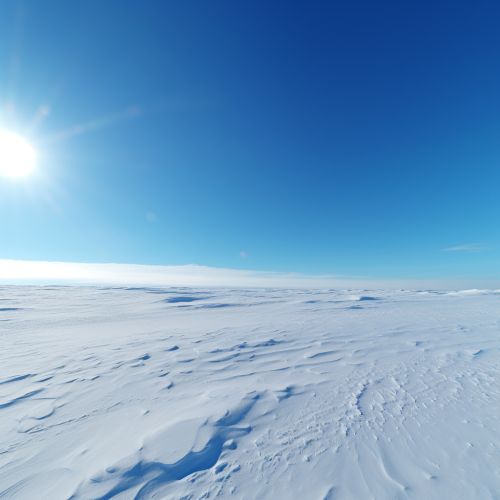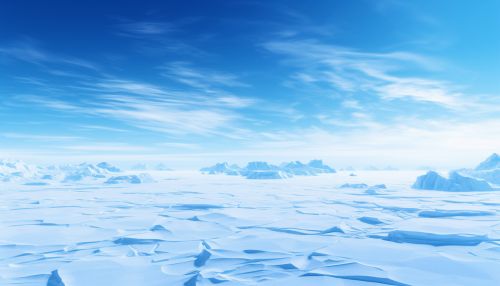Polar Regions
Introduction
The polar regions of Earth, also known as Earth's frigid zones, are the regions of the planet that surround its geographical poles (the North and South Poles), lying within the polar circles. These high latitudes are dominated by Earth's two polar ice caps: the Arctic to the north and the Antarctic to the south.


Geography and Climate
The polar regions are characterized by extremely cold temperatures, heavy glaciation wherever there is sufficient precipitation to form permanent ice, and extreme variations in daylight hours, with twenty-four hours of daylight in summer, and complete darkness at mid-winter.
Arctic Region
The Arctic region is located at the northernmost part of the Earth. It consists of the Arctic Ocean and parts of Canada, Russia, Greenland, the United States, Norway, Sweden, Finland, and Iceland. The Arctic is mostly covered by ice-covered ocean surrounded by treeless permafrost. In recent years, the extent of the sea ice has been declining due to climate change.
Antarctic Region
The Antarctic region is located in the southern hemisphere, encircling the South Pole. It is almost entirely south of the Antarctic Circle. Around 98% of Antarctica is covered by the Antarctic ice sheet, the largest single mass of ice on Earth.
Flora and Fauna
Despite the harsh conditions, the polar regions are home to a variety of species, many of which have adapted to survive in these extreme environments.
Arctic Flora and Fauna
In the Arctic, vegetation is tundra, where the soil is too cold and poor in nutrients to support trees, and consists of low-growing plants such as mosses, lichens, herbs and small shrubs. This region is inhabited by species such as the polar bear, Arctic fox, reindeer, and various species of seals and birds.
Antarctic Flora and Fauna
Antarctica's harsh climate supports only a sparse, cold-tolerant vegetation that includes mosses, lichens, and algae. The fauna of Antarctica includes penguins, blue whales, orcas, colossal squids and fur seals.
Human Activity
Human activities in the polar regions are limited due to the harsh climate and environment. However, these regions have significant importance in terms of scientific research, resources, and geopolitics.
Arctic
In the Arctic, human activities primarily include indigenous subsistence activities, commercial fishing, hunting, and oil and gas extraction. The region is also significant for scientific research, particularly in relation to climate change.
Antarctica
In Antarctica, human activity is regulated by the Antarctic Treaty System, which prohibits military activity, mineral mining, nuclear testing, and nuclear waste disposal. It supports scientific research and protects the continent's ecozone.
Environmental Issues
The polar regions are particularly sensitive to climate change, with melting polar ice posing one of the most significant environmental challenges today.
